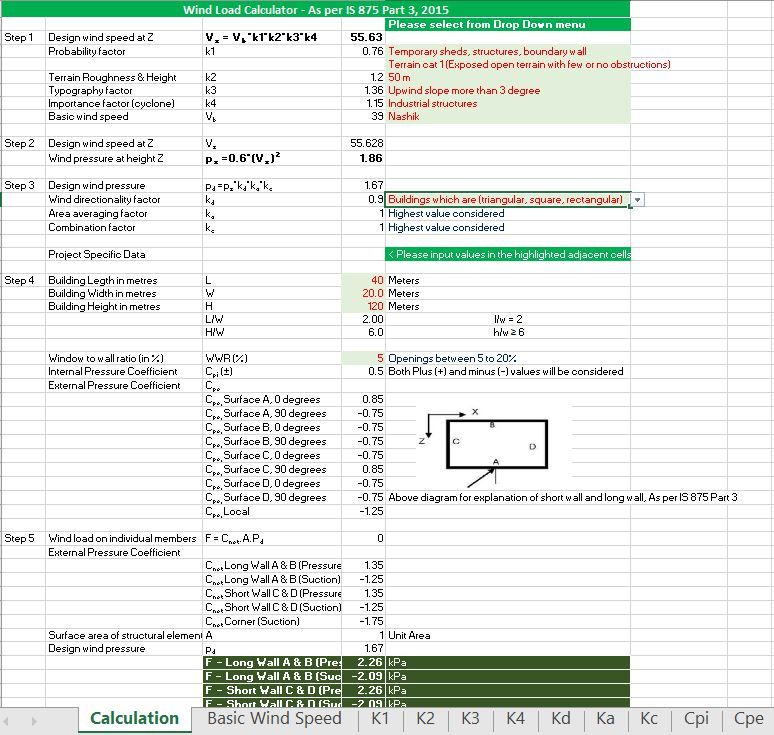
This Excel-based tool is designed specifically for Wind Load Calculation, adhering to the Indian Standards IS 875, Part 3, 2015. It streamlines the process of determining wind loads for buildings, providing a structured approach to this critical aspect of structural design.
When using this tool, it’s essential to cross-reference the input values with IS 875 Part 3. Keeping a copy of the standard alongside ensures accuracy, allowing users to verify the data obtained from each dropdown menu and ensuring the reliability of the calculated wind loads.
What is Wind Load and why we need to calculate it?
Wind load refers to the force exerted by the wind on structures like buildings, bridges, towers, and other architectural elements. It is a crucial factor to consider in structural engineering, as excessive wind loads can lead to structural failures, compromising the safety and integrity of buildings and other constructions.
Also learn about Pre-Design Phase in Construction & Real Estate Projects
Calculating wind load is essential for several reasons:
- Safety: Accurate wind load calculations ensure that structures are designed to withstand the maximum wind forces they are likely to encounter, minimizing the risk of failure or collapse.
- Structural Integrity: Understanding the wind load helps engineers design buildings and infrastructure that can maintain their structural integrity under varying wind conditions, ensuring longevity and durability.
- Cost Efficiency: Properly calculated wind loads can lead to more efficient designs, potentially reducing material costs without compromising safety or functionality.
- Compliance with Standards: Many countries have specific building codes and standards that mandate the calculation and consideration of wind loads in structural design. Adhering to these standards is essential for regulatory compliance and obtaining necessary approvals.
Explore on Real Estate Feasibility – Massing Studies
Calculating wind load is a fundamental step in structural design, ensuring safety, durability, and compliance with regulatory standards.
We’ve developed an in-house Excel tool specifically for wind load calculation, meticulously crafted to align with the guidelines of IS code 875 Part 3. This calculator utilizes the established logic outlined in the code to accurately compute wind loads for structures.
The Excel sheet encompasses all essential inputs required by the standard, including the basic wind speeds for major cities across India and relevant constants. It offers a user-friendly interface, ensuring efficient and precise wind load calculations for your projects.

Below link for downloading the wind load calculator as per IS 875 part 3:

Few key points for using this calculator:
1. This calculator will work only in Microsoft Excel 2016 and above, as this calculator uses a ‘ifs’ function kindly do check if the ‘ifs’ functionality is available in your version of excel.
2. The cells highlighted in red font, grey background are ‘selection/input’ actionable items. Updating this data will provide accurate wind loads.
3. All cells are locked except the cells with red font and grey background.
See also: House construction cost calculator
Visit our blog page to delve into other architecture-related interesting topics.





